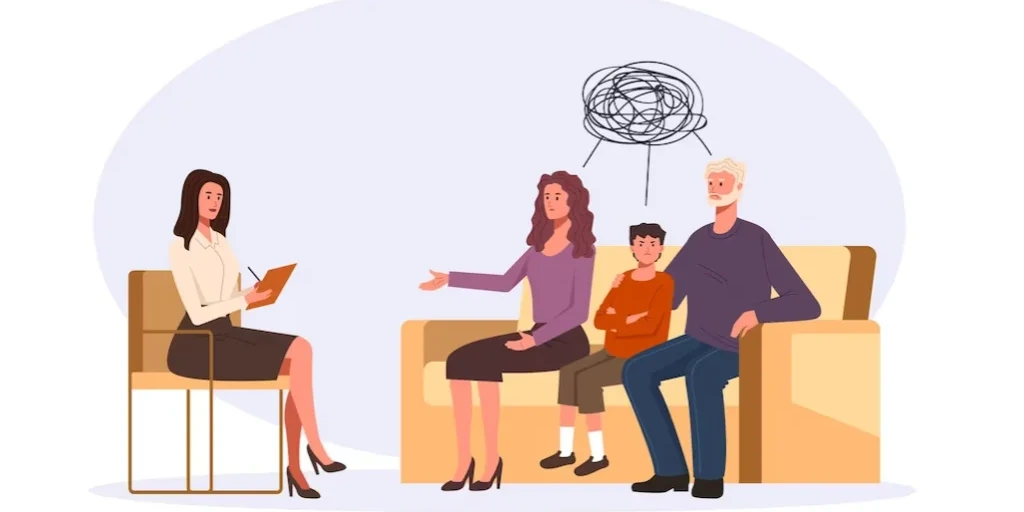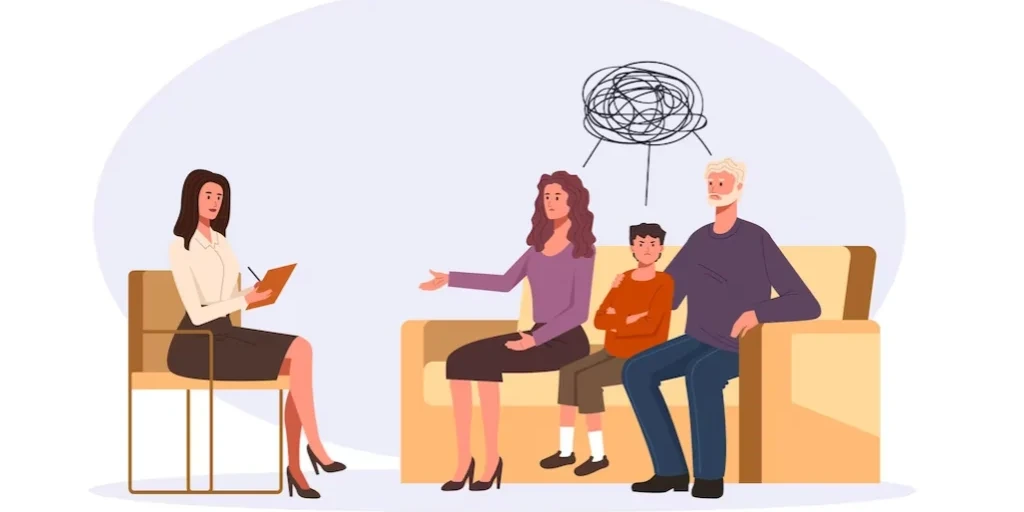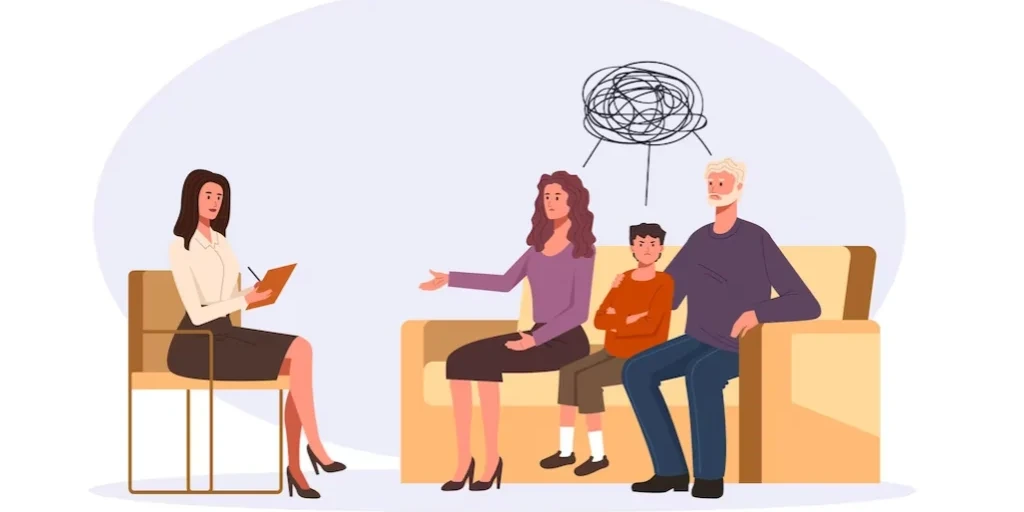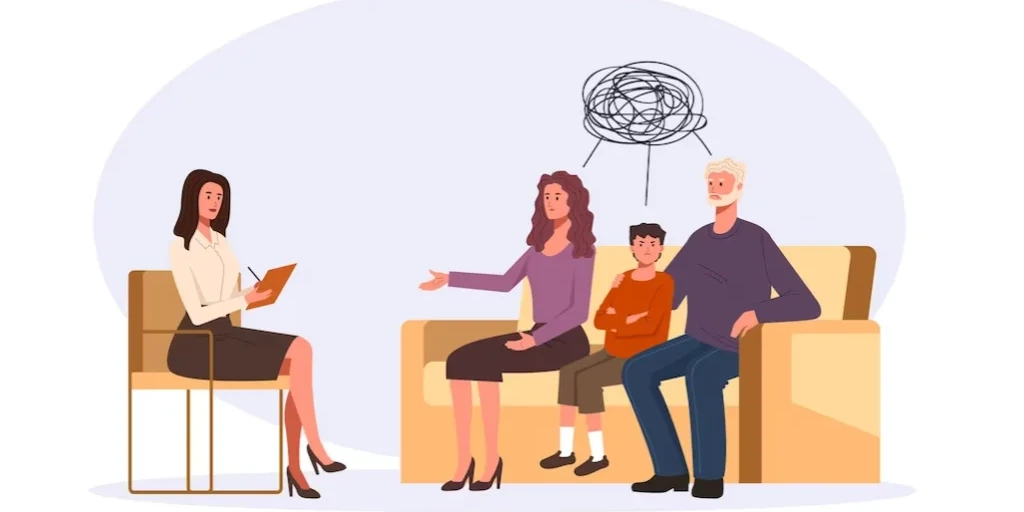24/7 Helpline:
(866) 899-221924/7 Helpline:
(866) 899-2219
Learn more about Prescription drug Rehab centers in Bantam
Prescription drug Rehab in Other Cities

Other Insurance Options
Beacon

Kaiser Permanente

Medical Mutual of Ohio

Highmark

ComPsych

Choice Care Network

Health Net

Sutter

Premera

BHS | Behavioral Health Systems

Cigna

Health Choice

Carleon

BlueShield

Self-pay options

Magellan Health

Optima

Ceridian

BlueCross

Coventry Health Care








Mountainside Treatment Center – Canaan
Mountainside Treatment Center provides a full spectrum of chemical dependency care including detox, ...

Newport Academy
Located in Hartford, Connecticut, Newport Academy is an alcohol and drug rehab program that offers a...

Western CT Mental Health Network – WCMHN
Western CT Mental Health Network – WCMHN is a public rehab located in Torrington, Connecticut. Weste...

The McCall Behavioral Health Network
The McCall Behavioral Health Network is a drug and alcohol treatment center that supports adults and...

McCall Center for Behavioral Health – McCall House
McCall House is a comprehensive recovery program that provides structure, research-based support and...

New Milford Hospital – Behavioral Health
New Milford Hospital – Behavioral Health is a private rehab located in New Milford, Connecticut. New...

McCall Center for Behavioral Health – Fenton House
McCall Center for Behavioral Health House is a comprehensive recovery program that provides structur...

Community Mental Health Affiliates – Child and Family Counseling Center
Community Mental Health Affiliates - Child and Family Counseling Center is located in Torrington, Co...

McCall Foundation
McCall Foundation is a private rehab located in Winsted, Connecticut. McCall Foundation specializes ...

MCCA – Midwestern Connecticut Council on Alcoholism
Midwestern Connecticut Council on Alcoholism (MCCA) is non-profit organization dedicated on helping ...

Connecticut Junior Republic
Connecticut Junior Republic provides behavioral health services for children, adolescents, young adu...

Spring River Mental Health and Wellness
Spring River Mental Health and Wellness provides outpatient fitness and behavioral health services. ...

Community Behavioral Health
Community Behavioral Health is a private rehab located in Salisbury, Maryland. Community Behavioral ...

Three Lower County Community Services
Three Lower County Community Services is a private rehab located in Salisbury, Maryland. Three Lower...

Peninsula Addiction Services
Peninsula Addiction Services offers outpatient services for individuals with alcohol and/or substanc...

Adventist HealthCare Behavioral Health and Wellness Services – Peninsula Regional Medical Center
Adventist HealthCare Behavioral Health and Wellness Services - Peninsula Regional Medical Center off...

Hudson Health Services – Broad Street Halfway House
Hudson Health Services - Broad Street Halfway House is located in Salisbury, Michigan. Hudson Health...

Eastern Shore Psychological Services
Eastern Shore Psychological Services at Salisbury is a private for Profit Limited Liability Company ...

Journey House
Journey House, located in Bridgewater, Massachusetts, is a sober living home that provides alcohol a...

Maris Center
Maris Center offers inpatient treatment for individuals with alcohol and/or substance addiction. The...

Right Turn
The Right Turn addiction treatment center offers many evidence based treatment programs to those bat...

Second Wind
Second Wind offers inpatient treatment for individuals with alcohol and/or substance addiction. The ...

Behavioral Health Specialists – Sunrise Place
Sunrise Palace is a residential mental health and drug and alcohol addiction treatment center in Nor...

The Link Halfway House
The Link Halfway House is for men who have successfully completed short term residential treatment f...

Behavioral Health Specialists
Behavioral Health Specialists - Sunrise Place is a personalized alcohol and drug treatment program o...

Oasis Counseling International
Oasis Counseling International exists to offer a safe place for weary travelers to pause, reflect an...

The Mental Health Center
The Mental Health Center is a private rehab located in Colebrook, New Hampshire. The Mental Health C...

Inspira Medical Center Woodbury – Behavioral Health
Inspira Medical Center Woodbury–Behavioral Health, in Woodbury, New Jersey, is a mental health and d...

Healthmark Counseling
Healthmark Counseling offers outpatient services for individuals with a Mental Health diagnosis and/...

Richard Hall Comunity Mental Health Center – Somerset County
Richard Hall Comunity Mental Health Center – Somerset County is a public rehab located in Bridgewate...

Maryville – Atlantic County
Maryville – Atlantic County is a private rehab located in Northfield, New Jersey. Maryville – Atlant...

Solstice Counseling & Wellness Center – Gloucester County
Solstice Counseling & Wellness Center – Gloucester County is a private rehab located in Woodbury, Ne...

Anchor Care
Anchor Care is an outpatient addiction treatment center located in Central New Jersey. Anchor Care s...

Spero Health – Woodbury
Spero Health – Woodbury is a private rehab located in Woodbury, New Jersey. Spero Health – Woodbury ...

Pivot – Alcohol Substance Abuse Council of Jefferson County
Pivot – Alcohol Substance Abuse Council of Jefferson County is a private rehab located in Watertown,...

Credo Community Center – Donald F. Pond Men’s Community Residence
Credo Community Center - Donald F. Pond Men's Community Residence is located in Watertown, New York....

Credo Community Center – Men’s Aftercare Community Residence
Credo Community Center - Men's Aftercare Community Residence is located in Watertown, New York. Cred...

Pivot
Pivot is a private center located in Watertown, NY. Pivot specializes in the treatment of alcohol ab...

Credo Community Center – Outpatient
Credo Community Center - Outpatient is located in Watertown, New York. Credo Community Center - Outp...

Alternatives Counseling
Alternatives Counseling is a private rehab located in Salisbury, North Carolina. Alternatives Counse...

Choices Substance Abuse Services
Choices Substance Abuse Services is a private rehab located in Salisbury, North Carolina. Choices Su...

Genesis A New Beggining – Salisbury
Genesis A New Beggining – Salisbury is a private rehab located in Salisbury, North Carolina. Genesis...

Lehigh Valley Health Network – Inpatient Psychiatry
The Lehigh Valley Health Network (LVHN) Inpatient Psychiatry program specializes in mental and behav...

White Deer Run of Lehigh
White Deer Run of Lehigh is a drug and alcohol rehab located in Bethlehem PA. They provide medical d...

Lehigh Valley Health Network – Mental Health
Lehigh Valley Health Network – Mental Health is a private rehab located in Bethlehem, Pennsylvania. ...

Saint Lukes Hospital – Behavioral Health Inpatient Services
Saint Lukes Hospital – Behavioral Health Inpatient Services is a private rehab located in Bethlehem,...

New Directions Treatment – 2442 Broadhead Road
New Directions Treatment – 2442 Broadhead Road is a private rehab located in Bethlehem, Pennsylvania...

Sharon Regional Health Systems – Behavioral Health Services
Sharon Regional Health Systems – Behavioral Health Services is a private rehab located in Sharon, Pe...

MARS ATP – Mid Atlantic Rehabilitation Services
MARS ATP – Mid Atlantic Rehabilitation Services is a private rehab located in Bethlehem, Pennsylvani...

Hogar Crea – Women’s Center
Hogar Crea - Women's Center is a private, traditional rehab located in Bethlehem, PA. Hogar Crea - W...

Stephen’s Place
Stephen's Place is a halfway house that aims to help men returning to the community after incarcerat...

Solutions Counseling and Consultation
Solutions Counseling and Consultation is a private rehab located in Bethlehem, Pennsylvania. Solutio...

Lutheran Social Services – Watertown Counseling
Lutheran Social Services – Watertown Counseling is a private rehab located in Watertown, South Dakot...

Human Service Agency
Human Service Agency is a non-profit rehab located in Watertown, South Dakota. Human Service Agency ...

Spring to Life – S2L
Spring 2 Life (S2L) is a faith based addiction recovery center for adult men in Woodbury, Tennessee....

S2L Recovery
S2L Recovery is a Christian-based addiction recovery residential care facility for men located in Wo...

Serenity Recovery and Wellness
Serenity Recovery and Wellness is a private rehab located in Riverton, Utah. Serenity Recovery and W...

Barry Robinson Center
Barry Robinson Center is an addiction treatment provider for military-connected youth, in Norfolk, V...

Norfolk Community Services Board
Norfolk Community Services Board stands as a behavioral health center providing substance abuse trea...

Norfolk Mental Health
Norfolk Mental Health is a public rehab located in Norfolk, Virginia. Norfolk Mental Health speciali...

Pathways to Life
Pathways to Life offers outpatient services for children and adults who are struggling with mental h...

Norfolk Community Services Board – Olney Road
Norfolk Community Services Board – Olney Road is a public rehab located in Norfolk, Virginia. Norfol...

GHR Center for Addiction Recovery and Treatment
GHR Center for Addiction Recovery and Treatment is a private rehab located in Norfolk, Virginia. GHR...

Praxis by Landmark of Norfolk
Praxis by Landmark of Norfolk is a private rehab located in Norfolk, Virginia. Praxis by Landmark of...

Family Resources Associates
Family Resources Associates is a private rehab located in Watertown, Wisconsin. Family Resources Ass...

Volunteers of America Northern Rockies – Center of Hope
Volunteers of America Northern Rockies - Center of Hope is located in Riverton, Wyoming. Volunteers ...

Fremont Counseling Service
Fremont Counseling Service (FCS) is a CARF accredited, non-profit community mental health center tha...

























































































































































































Wellspring Foundation
Wellspring is an accredited organization located in Bethlehem, CT dedicated to aiding young and adul...

MCCA – Midwestern Connecticut Council on Alcoholism
Midwestern Connecticut Council on Alcoholism (MCCA) is non-profit organization dedicated on helping ...

Center for Youth and Families
Center for Youth and Families is a private rehab located in Torrington, Connecticut. Center for Yout...

MCCA – Trinity Glen Men’s Program
MCCA - Trinity Glen Men's Program offers a long-term residential treatment for women who are struggl...

Eden Hill Recovery Retreat
Eden Hill Recovery Retreat is a sober living house designed exclusively for women. Eden Hill Recover...

Addictions Associates
Addictions Associates LLC offers outpatient treatment for individuals with alcohol and/or substance ...

Go Getters – Main Street
Go Getters – Main Street is a private rehab located in Salisbury, Maryland. Go Getters – Main Street...

Wicomico Behavioral Health
Wicomico Behavioral Health is a private rehab located in Salisbury, Maryland. Wicomico Behavioral He...

Counseling Associates
Counseling Associates is a private rehab located in Salisbury, Maryland. Counseling Associates speci...

White Flint Recovery
White Flint Recovery is a private rehab located in Salisbury, Maryland. White Flint Recovery special...

Eastern Shore Psychological
Eastern Shore Psychological is a private rehab located in Salisbury, Maryland. Eastern Shore Psychol...

AA – Alcoholics Anonymous
AA – Alcoholics Anonymous is a non-profit rehab located in Salisbury, Maryland. AA – Alcoholics Anon...

Reformers Unanimous Addictions Program
Reformers Unanimous Addictions Program is a private rehab located in Salisbury, Maryland. Reformers ...

Counseling Association – Gateway Behavioral Health
Counseling Association – Gateway Behavioral Health is a private rehab located in Salisbury, Maryland...

Hudson Health Services – Chestnut Street Transitional House
Hudson Health Services - Chestnut Street Transitional House is located in Salisbury, Michigan. Hudso...

Hudson Health Services – Walnut Street Transitional House
Hudson Health Services - Walnut Street Transitional House is located in Salisbury, Michigan. Hudson ...

Hudson Health Services – Union
Hudson Health Services - Union is located in Salisbury, Michigan. Hudson Health Services - Union is ...

CBH Salisbury: Wicomico County (PRP/IOP/PHP)
CBH Salisbury: Wicomico County (PRP/IOP/PHP) is a public rehab located in Salisbury, Maryland. CBH S...

The Dimock Center – Outpatient Addiction and Recovery Services – OARS
The Dimock Center, in Roxbury, Massachusetts, offers comprehensive mental and behavioral health care...

Omada Behavioral Health Services
Omada Behavioral Health Services is a clinic dedicated to provide substance use disorder treatment t...

West Hills Lodge Women’s Program
West Hills Lodge Women’s Program is a private rehab located in Northfield, Minnesota. West Hills Lod...

Recovery Resources
Recovery Resources is a private rehab located in Winsted, Minnesota. Recovery Resources specializes ...

Lone Wolf Recovery
Lone Wolf Recovery is a private rehab located in Winsted, Minnesota. Lone Wolf Recovery specializes ...

AA – Alcoholics Anonymous – West Madison Avenue
Alcoholics Anonymous - West Madison Avenue is an international fellowship of men and women who have ...

Prevention Pathways
Prevention Pathways is a private rehab located in Norfolk, Nebraska. Prevention Pathways specializes...

The Link – Dual Recovery Program
The Link – Dual Recovery Program is a private rehab located in Norfolk, Nebraska. The Link – Dual Re...

Ponca Tribe of Nebraska
Ponca Tribe of Nebraska is a private rehab located in Norfolk, Nebraska. Ponca Tribe of Nebraska spe...

Women’s Empowering Life Line
Women’s Empowering Life Line, in Norfolk, Nebraska, is an integrative, 12 step focused drug rehab fo...

Adlerian Counseling and Training
Adlerian Counseling and Training is a private counseling clinic located in Norfolk, NE. Adlerian Cou...

Faith Regional Behavioral Health
Faith Regional Behavioral Health is a private rehab located in Norfolk, Nebraska. Faith Regional Beh...

Faith Regional Health Services Behavioral Health
Faith Regional Health Services Behavioral Health is a private rehab located in Norfolk, Nebraska. Fa...

Stepping Out
Stepping Out is a private rehab located in Colebrook, New Hampshire. Stepping Out specializes in the...

Tri County Community Action – The Friendship House
Tri County Community Action–The Friendship House, in Bethlehem, New Hampshire, is a short term, high...

Tri County Community Action
Tri County Community Action is an outpatient substance abuse treatment dedicated to help individuals...

SODAT of New Jersey
SODAT of New Jersey is a private rehab located in Woodbury, New Jersey. SODAT of New Jersey speciali...

GenPsych
GenPsych is located in Bridgewater, New Jersey. GenPsych offers a comprehensive array of programs an...

Center for Discovery Bridgewater
Center for Discovery Bridgewater is a private rehab located in Bridgewater, New Jersey. Center for D...

Associates for Life Enhancement
Associates for Life Enhancement is a Counseling Clinic located in Northfield, New Jersey. Associates...

One Woman at a Time Outreach
One Woman at a Time Outreach is a private rehab located in Watertown, New York. One Woman at a Time ...

Credo Community Center – Patricia Pond Hinkley Women’s Residence
Credo Community Center - Patricia Pond Hinkley Women's Residence is located in Watertown, New York. ...

Berkshire Farm Center for Youth Outpatient
Berkshire Farm Center for Youth Outpatient is a non-profit rehab located in Canaan, New York. Berksh...

AA – Alcoholics Anonymous
AA – Alcoholics Anonymous is a non-profit rehab located in Cornwall, New York. AA – Alcoholics Anony...

AA – Alcoholics Anonymous – Jefferson County Intergroup
Alcoholics Anonymous (AA) - Jefferson County Intergroup is located in Watertown, New York. Alcoholic...

Samaritan Medical Center – Behavioral Health
Samaritan Medical Center – Behavioral Health is a private rehab located in Watertown, New York. Sama...

Alcohol Abuse Chemical Dependency Counseling Services
Alcohol Abuse Chemical Dependency Counseling Services is a private rehab located in Salisbury, NC. A...

AA – Alcoholics Anonymous
AA – Alcoholics Anonymous is a non-profit rehab located in Salisbury, North Carolina. AA – Alcoholic...

Rowan Treatment Associates of Salisbury
Rowan Treatment Associates of Salisbury is a private rehab located in Salisbury, North Carolina. Row...

Daymark Recovery Services
Daymark Recovery Services is located in Salisbury, North Carolina. Daymark Recovery Services is a no...

Genesis A New Beginning
Located in Salisbury, North Carolina, Genesis a New Awakening offers mental health treatment for a w...

Rehab After Work
Rehab After Work is a licensed intensive outpatient drug and alcohol treatment program which has bee...

Oxford House Saucon
Oxford House Saucon is a democratically self-run residence in Bethlehem, Pennsylvania. Oxford House ...

Resources for Human Development – Hope House
Resources for Human Development - Hope House is a private rehab located in Bethlehem, PA. Resources ...

Bet El Counseling Services
Bet El Counseling Services is a private rehab located in Bethlehem, Pennsylvania. Bet El Counseling ...

Northeast Treatment Centers
Northeast Treatment (NET) Centers is a drug and alcohol rehab for adults in Bethlehem, PA. NET Cente...

CONCERN – Bethlehem
CONCERN Professional Services - 90 South Commerce Way is a non-profit rehab located in Bethlehem, PA...

New Directions Treatment Services – Broadhead Road
New Directions Treatment Services – Broadhead Road is a private rehab located in Bethlehem, Pennsylv...

AA – Alcoholics Anonymous
AA – Alcoholics Anonymous is a non-profit rehab located in Bethlehem, Pennsylvania. AA – Alcoholics ...

Renaissance Ranch Women’s Residential
Renaissance Ranch Women's Residential is an LDS-based alcohol and Utah drug rehabilitation program. ...

Copper Sage Recovery Center
Copper Sage Recovery Center is a private rehab located in Riverton, Utah. Copper Sage Recovery Cente...

MentorWorks
MentorWorks is a substance use disorder rehab facility in Riverton, UT that offers professional and ...

Crawford Rehabilitation Services
Crawford Rehabilitation Services is a private rehab located in Norfolk, Virginia. Crawford Rehabilit...

Agape Counseling and Therapeutic
Agape Counseling and Therapeutic is a private rehab located in Norfolk, Virginia. Agape Counseling a...

In Home Clinical and Casework Services
In Home Clinical and Casework Services is a private rehab located in Norfolk, Virginia. In Home Clin...

ADAPT
ADAPT is a private rehab located in Norfolk, Virginia. ADAPT specializes in the treatment of Substan...

Directions Counseling Center
Directions Counseling Center offers outpatient treatment for individuals with a mental health diagno...

Ezdan Fluckiger
Ezdan Fluckiger is a private rehab located in Torrington, Wyoming. Ezdan Fluckiger specializes in th...

Peak Wellness Center
Peak Wellness is a private, non-profit counseling center offering high quality, affordable counselin...












































































































































































































































































































































































































